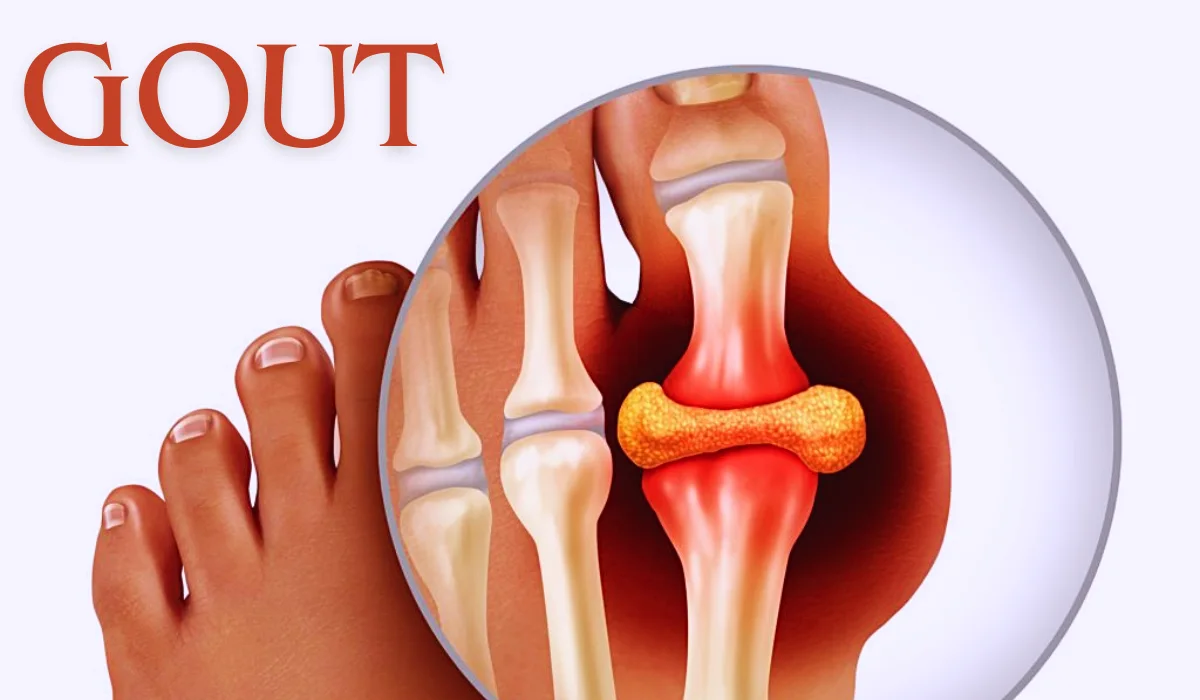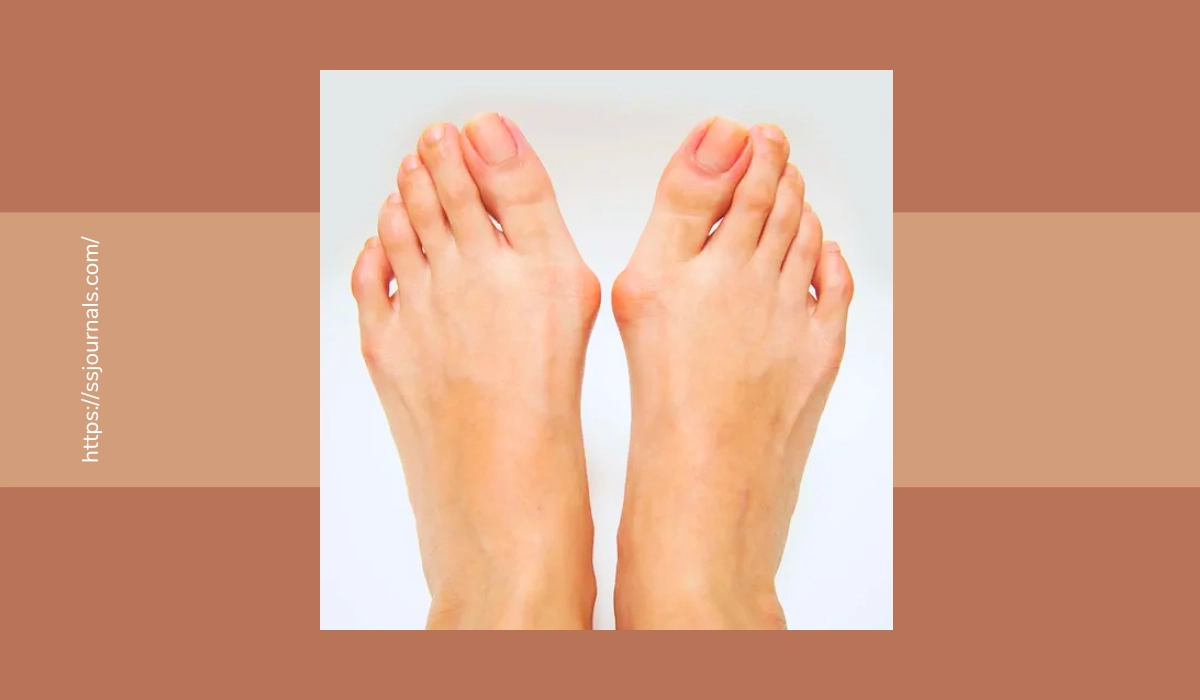Foot pain and discomfort can have many different underlying causes. Two common conditions that affect the feet, especially around the big toe area, are gout and bunions. While they may seem similar at first glance since they both involve swelling and inflammation in that region, gout, and bunions have quite distinct origins, symptoms, and treatment approaches.
Understanding the key differences between these two, foot conditions is important for getting an accurate diagnosis and following the proper management plan. This guide aims to lay out the contrasts between gout and bunions to aid in differentiating them.
Difference Between Gout And Bunion?
Gout and bunion are two separate foot conditions that affect different parts of the foot, Gout is caused by a buildup of uric acid crystals in the joints, usually in the big toe, leading to sudden and severe joint pain, swelling, and redness. Bunions on the other hand are bony protrusions at the base of the big toe that cause a bending and shifting of the toe, leading to irritation, redness, and pain over time.

While gout and bunion can sometimes be confused due to the location on the foot, they have very distinct causes, symptoms, and treatments. Understanding the differences in these conditions can help guide proper diagnosis and medical care.
Key features that set gout and bunions apart include the sudden onset of gout attacks compared to the gradual development of bunions, the intense joint inflammation seen in gouts compared to irritation and redness with bunions, and the uric acid involvement triggering gout episodes.
Being able to recognize a flare-up of gout versus increased irritation in an existing bunion can help patients seek appropriate interventions. This includes specific medications to control uric acid levels to treat gout or toe spacers and orthotics to ease pressure points from a bunion. Read on to understand more key comparisons between gout and bunions.
Gout vs Bunion: Causes and Risk Factors
What triggers gout vs bunion formation differs significantly. Gout results from hyperuricemia, meaning a buildup of uric acid in the bloodstream which then crystallizes and deposits in the joints (often in the big toe joint).
Excess uric acid production can occur due to genetics, diet, alcohol use, certain medications, and some conditions like obesity and high blood pressure. In a bunion deformity, the metatarsophalangeal (MTP) joint at the base of the big toe becomes misaligned.
This causes the bones and ligaments around the MTP joint to adapt in ways that protrude out. Bunions run in families but can also be caused by arthritis, injuries, certain footwear, and abnormal foot function or structure leading to imbalance at the MTP joint.
1. Onset and Severity
Gout and bunions differ greatly in their onset and severity of symptoms. People with gout usually experience sudden gout attacks with intense joint pain, swelling, warmth, and redness at the joint base. Gout flare-ups can become extremely painful within hours of onset. Gout attacks also tend to last around 3 to 10 days if untreated.
With bunions, pain, and irritation can progressively worsen over time but are not as abrupt or severe as gout attacks. Bunions involve irritation and inflammation of the enlarged joint rather than true inflammation within the joint seen in gouts. The degree of pain and joint changes correlate with the size and position of the bunion bump over months to years.
2. Duration and Frequency
The duration and frequency of problems also differ when considering gout vs bunion. Gout symptoms arise due to fluctuations in uric acid levels in the body. Periods of high uric acid can precipitate sudden gout attacks.
Left untreated, gout attacks tend to recur periodically. Uric acid levels between gout episodes may return to normal ranges for periods of months up to a few years before another gout attack arises.
Bunion pain and irritation however tends to wax and wane more gradually. As the bunion gets larger over time, symptoms often progressively worsen overall. Well-fitted shoes and orthotics may provide periods of relief mixed with worsening discomfort that correlates with bunion enlargement.
3. Involved Structures
The anatomical structures involved in gout vs bunions differ as well. Gout involves uric acid deposition and intense inflammation within the joint itself (often the 1st metatarsophalangeal joint deep in the big toe).
Multiple structures like the joint lining and connective tissues become swollen, red, and exquisitely tender to touch during a gout attack. Bunions meanwhile involve gradual misalignment of the 1st metatarsophalangeal joint itself.
Cartilage and adjacent soft tissues become stretched. While some edema and inflammation affect the overlying joint lining, true inflammation within the joint itself is uncommon until the late stages. Bone protrusion and tissue swelling at the joint base cause friction against shoes contributing to discomfort.
Diagnosis
Diagnosing gout vs bunion properly involves a combination of evaluating clinical history and examination findings. However, some key features can help distinguish one condition from the other.
Gout may be signaled by a clear recent history of sudden acute joint pain with significant swelling, warmth, and “joint” tenderness. Checking serum uric acid levels can also aid in the diagnosis. Documentation of fluctuating high and low lab values adds support for gout.
Diagnosing bunions involves evaluating the slow enlargement of the medial eminence of the 1st MTP joint. Gentle palpation helps localize discomfort to the bump rather than the actual joint which remains free of warmth and true swelling until late stages. X-rays over time can track progressive changes to the joint alignment in bunions.
Treatment Approaches
Initial treatment approaches differ greatly between gout vs bunion. With an acute gout flare, management focuses on relieving intense inflammatory symptoms. This includes NSAIDs, steroids, hot/cold therapy, joint rest, and medications to lower uric acid buildup long term.
Bunion management centers around preventing progression and easing pressure on irritated tissues next to the enlarged joint. Options include wider shoes with soft forefoot beds, cushioned inserts and spacers, toe straighteners to realign the joint, and custom orthotics. Surgery is reserved for severe, nonresponsive bunions but can provide lasting correction of the joint position.
Conclusion
Gout and bunions are two independent foot conditions that have some overlapping features due to location but differ greatly in their actual causes, involved joint structures, and best treatment plans.
Remembering some key comparisons can help clarify the diagnosis when evaluating foot pain. Gout arises from high levels of uric acid crystals building up in the joint fluid, leading to abruptly onset swelling, warmth, and redness from robust innate immune responses.
Bunion pain stems from gradual bone misalignment and soft tissue stretch adjacent to the big toe joint. Discomfort is more gradual, inflammation is low grade, and irritation comes from friction against shoes.
Being able to distinguish gout flares from bunion-related discomfort can guide appropriate interventions. Gout requires urgent efforts to calm acute inflammation by draining fluid and halting neutrophil activity within the joint itself.
Lowering overall uric acid levels is key. Bunions may benefit from orthotics and spacers to ease pressure points but don’t respond to anti-inflammatory medications targeting true joint inflammation. Remembering the speed of onset and location of the inflammation – within the joint alone with gouts versus adjacent to the protruding bone in bunions – also helps set them apart.
Have you ever experienced foot pain around the big toe area? If so, were you able to determine if it was caused by gout, a bunion, or something else? Share your experience in the comments below.

